- Home
- Larry McMurtry
Oh What a Slaughter Page 4
Oh What a Slaughter Read online
Page 4
The aloof John Charles Frémont, once the operation was seen to be a success, as usual makes it appear that he had been the prime mover, while getting no actual blood on his hands. The lesson administered, he says, “was rude but necessary, and had the desired effect.”
David Roberts deserves much credit for addressing the Sacramento River Massacre in A Newer World. His own suspicion, backed up by what anthropological studies there are, was that the Indians had gathered to celebrate a spring ritual, possibly the Bear Dance, which the whites, unfamiliar with this ritual, mistook for a war dance.
The Maidu and Wintu were fairly settled, sedentary tribes, acorn-gatherers, salmon-fishers. Their numbers shrank so precipitously during the second half of the nineteenth century that by the time the anthropologists got there there were few left to study.
Ishi
The much publicized Ishi, last of the Yana tribe, was studied, by the anthropologist Theodora Kroeber, but she knew nothing of this massacre and did not try to determine if some trace of it survived in Yana lore or memory.
In a sense the Sacramento River Massacre illustrates a problem that was to bedevil white-Indian relations from first to last: the inability, on the part of whites, to distinguish between Indians who were friendly and Indians who were hostile. Any big gathering of Indians, however well intentioned, made whites nervous—to a degree it still does.
One of the continuing sources of disagreement about the Sand Creek Massacre is that John Chivington led his troopers into the camp of Black Kettle, probably the single best known peace Indian of that day. Black Kettle was so sure that he enjoyed protection that he desperately waved an American flag even as the Coloradans were mowing down his people.
Black Kettle
Back row: Bosse, a Cheyenne; Left Hand, an Arapaho; White Wolf, a Kiowa.
Front row: White Antelope, brother of Black Kettle; Black Kettle, Cheyenne chief; Bull Bear, a Cheyenne; Neva, an Arapaho
From the first there were plenty of people in the West—indeed, in the country—who were frankly exterminationists. They wanted all the Indians gone. It may be that a disproportionate number of these genocidally minded settlers made their way to California. The deaths at the Sacramento River were merely a prelude to the rapid elimination of the California Indians.
For a good account of this grim slaughter the reader is directed to the “Far West” chapter of James Wilson’s The Earth Shall Weep. During the conflict with the Plains Indians, there were at least a few equal fights. In California, with the exception of the Modoc War, there were no equal fights. Men who believed that the only good Indian was a dead Indian overwhelmingly prevailed. During the Gold Rush particularly, exterminationists were thick on the ground. Indians were killed as casually as rabbits. I have reported elsewhere about a young vigilante who came to have qualms about killing Indian children with his rifle: the big bullets tore the small bodies so! The man was soon able to square his conscience by killing only adults with his rifle; the children he dispatched with his pistol.
It is only fair to say, though, that if one puts oneself in the position of an ill-trained and perhaps scrappily equipped young soldier, the distinction between friendly Indians and hostile Indians may seldom have been easy to make—or maintain—particularly in the frightening minutes just before a fight.
Similarly, most settlers, making their lonely way across the harsh distances of the West, might naturally have found all Indians a little frightening. By the end of the settlement period particularly, most settlers would have been well aware that the Indians had been pushed off their land. Why wouldn’t they have been hostile?
Also, during the whole era of conquest and conflict, there was the constant problem of the young warriors—young men raised with a warrior ethic, in a warrior society. Raiding, for these boys, was not only a right: it was necessary training and, also, the source of self-esteem.
Many a well-planned Indian ambush was blown at the last minute by the impatient young warriors, who could not wait for the right moment to attack. The Fetterman Massacre in 1866 was one of the few ambushes in which the young warriors didn’t spoil the plan.
Black Kettle himself, the most dedicated of peace Indians, had as much trouble with his young warriors as any other Indian, and he admitted it.
Quanah Parker
Red Cloud
In the 1870s particularly, warring in the West extended over a vast border-to-border territory. In the Southwest were Cochise, Victorio, Geronimo, Quanah Parker. In the north were Sitting Bull, Crazy Horse, Red Cloud. In the vast middle were the southern Cheyenne, Arapaho, Kiowa, Comanche, Osage, Pawnee. All these tribes had constantly to watch their territory shrink: they had to watch the game on which they depended slaughtered. They were up against it and they knew it. They had no reason to hold back: they found their dignity in fighting.
To some extent, perhaps, it is human nature to think the worst about those who are not as we are. Tribalism was an instinct and an organizing principle for so long that it is planted deep in the human psyche. It can rarely be civilized out of us.
General Custer
It is easy to say that the army in the West should have been more particular about which bands of natives they attacked. Right now, in Iraq, we are finding out how difficult it is to hit only the bad guys when we make war. Even the best reconnaissance has its limits. Custer had excellent reconnaissance available to him on that fatal day at the Little Bighorn. He ignored it all. If someone had pointed out to Kit Carson that these Indians dancing by the Sacramento River were only doing their spring Bear Dance would he have let them be? It seems unlikely. The men were by then in a killing mood, and they killed.
Three hours of steady killing produced a well-stocked meat shop on that tongue of land. Only after it ended and tempers cooled did some of the men realize that this killing left a bad taste. No doubt they were excited at first, but three hours of steady killing may well have become an unpleasant chore. Some men may have become sated—walked away with their dripping sabers. Some may finally have been repulsed.
In fairness to Frémont’s men, though, they were not many, and they were a long way from home. If the threat from these Indians was exaggerated by the panicky settlers, the general threat from Indians was real. Frémont always maintained that the only reason he attempted the nearly disastrous winter crossing of the Sierra Nevada in 1844 was because the Indians on the east side of the mountains—the Paiutes, particularly—were nibbling away at their horses and pack animals. His fear of being set afoot and having his men picked off one by one was not unreasonable.
In fact, only a few days after the Sacramento River Massacre, while camped farther north, in Klamath country, various of the party heard, during the night, a disquieting thud. Frémont got up to investigate, but found nothing. The next morning the party discovered that the thud had been the sound an axe made when it split the skull of Basil Lajeunesse, a popular man and one of Frémont’s special favorites. A punitive expedition was launched immediately. Many Klamaths were killed.
Ishi, last of the Yana, desperate, tired, and hungry, only allowed himself to be coaxed into the settlements in 1911, by which time almost all the Maidu and Wintu were gone.
We are unlikely ever to know more about the massacre at the Sacramento River than can be found in A Newer World, whose author acknowledges many uncertainties. A bunch of Indians, gathered for what purpose we can only guess, frightened the local whites, who called down death upon an unknown number of them. Kit Carson and some of the men may have regretted it; but they were soon back to killing Klamaths, in revenge for their young friend.
In 1862, Kit Carson, obeying the command of his superior, Major James H. Carleton, reluctantly began to drive the Mescalero Apache and then the Navaho from their homes. They were marched to a prison camp on the Bosque Redondo, in eastern New Mexico. There they died in numbers that far exceeded the death toll in any Western massacre. Their trek was called the Long Walk, the Navaho Trail of Tears. All in all such remo
vals were more deadly than any single fight. The Indians understood fighting, but no people easily accepts exile. Combatants can sometimes reconcile, but unjust exile seems to burn forever.
Kit Carson may not have been as brilliant a pure explorer as the prodigious Jedediah Smith—one of the few explorers who sought geographical knowledge for its own sake—but, for durability, Carson had no equal. He first went to California with Ewing Young in 1828: he beavered and he guided, and he was still doing it thirty-five years later. He led Frémont on three expeditions; he led many others as well. When he was done he could justly claim to have walked the whole West. The only guide who may have been his equal was the Delaware scout Black Beaver, who guided Captain Randolph Marcy on his explorations of the Red River country.
Saddened by the brutal business with the Apache and the Navaho, Kit Carson spent his last years with his beloved wife, Josefa, “Little Josie.” In photographs he always looks melancholy. Josefa died, and, not long after, Kit died, sad at the end.
Josefa Carson
The Mountain Meadows
Massacre, September 11, 1857
On the very day, October 12, 2002, when I sat down to begin organizing my notes on the Mountain Meadows Massacre, there appeared in The New York Times a long piece by Emily Eakin about that long-ago event and the still continuing controversy it has engendered. Two new books have recently been published (Will Bagley’s Blood of the Prophets and Sally Denton’s American Massacre), and a third—which I understand will constitute a Mormon rebuttal—is now in the press.
Scarcely two weeks later the New York Review of Books carried a thoughtful essay by Caroline Fraser about this same, much studied massacre. The Mormon historians who are doing the rebuttal will argue, yet again, that Brigham Young, the Mormon leader, did not order this massacre.
Mountain Meadows was again very much in the news, reinforcing my point that massacres, once exposed, just won’t go away. Of the six massacres I propose to study, Mountain Meadows is much the most complicated, and it is the only one in which there may have been a theocratic motive. Things just keep coming to light—2,605 bones and bone fragments accidentally uncovered at the monument site in 1999, for example—suggesting that we are probably still a long way from having heard the last word about Mountain Meadows.
Juanita Brooks
The cornerstone of Mountain Meadows studies is Juanita Brooks’s classic—and, considering that she is a devout Mormon, heroic—book, The Mountain Meadows Massacre, first published by Stanford in 1950 and kept in print now by the University of Oklahoma. There is a lengthy shelf of related studies, some of them by Juanita Brooks herself—the most substantial of these are listed in my bibliography.
All these books attempt to describe what happened on that dreadful September day in 1857, when a large wagon train on its way from Arkansas to California was massacred by a force composed of local Mormons and Paiute Indians. (Even here body counts differ: I thought 121 people were killed, but Sally Denton puts the count at 140.)
These various studies also attempt to determine why the massacre happened, and—biggest and most intractable question—who, if anyone, in the Mormon hierarchy ordered the killing. For nearly 150 years the finger of inquiry has been pointed at Brigham Young; it’s an issue still very much in debate.
The final, comprehensive truth about Mountain Meadows may have remained elusive, but in fact we do know a great deal about this massacre, and evidence such as the 2,605 bone fragments just keeps appearing. (A lead scroll purporting to be John Doyle Lee’s confession turned up as recently as 2002, but its authenticity seems questionable.) Talk about a massacre that won’t go away.
The Church of Jesus Christ of Latter-Day Saints (the Mormons) has hoped from the first day to the present that if they just stuck together, hunkered down, and kept quiet, time would pass and people would forget.
Time did pass, but people have not even begun to forget.
When in 1999 the president of the Mormon Church, Gordon B. Hinckley, journeyed to southern Utah to dedicate the most recent of the various unsatisfactory monuments at the Mountain Meadows site, he not only declared that the truth about Mountain Meadows could never be known, but he also read a disclaimer from the church’s legal team which affirmed that nothing said at the memorial service in any way implied Mormon complicity in these long-ago murders. (In less guarded moments President Hinckley has said that he suspected the local people did it.)
In suggesting that Mountain Meadows is an impenetrable mystery, President Hinckley has swung well wide of the truth. Juanita Brooks, a devout Mormon and fine historian, clearly and professionally penetrated many of these mysteries more than half a century ago, in The Mountain Meadows Massacre, a model of clarity. Will Bagley, Sally Denton, William Wise, and others have extended the valuable inquiry that she began.
* * *
Mountain Meadows would make a good opera. It is an American tragedy of blood. Billy the Kid’s story has yielded a ballet; perhaps someday something operatic will emerge from this tragic story.
The uniqueness of Mountain Meadows for this study is that on this then grassy plain whites killed whites—or, to be more precise, whites with the help of Indians killed whites. Both Mormons and Paiutes have downplayed their part in the killing. It had long been supposed that the whites killed mostly men, and the Paiutes mainly women and children, but the bones in the mass grave uncovered in 1999 have complicated this picture—of which more later.
The immigrant train in question, the so-called Fancher party, was well armed and well equipped. There were some thirty wagons and they had made it all the way from Arkansas through dangerous territory. It is unlikely that the Paiutes alone could have overrun them. The Paiutes might have nibbled at them, as they nibbled at Frémont, but they were not temperamentally inclined to long sieges or lengthy battles.
Everyone who has written about Mountain Meadows has been at pains to point out that the massacre occurred at a moment of high tension in the Mormon capital of Salt Lake City. The tension was due to the fact that the United States Army was on its way to Utah, to address many reports of Mormon excesses. The U.S. government meant to subdue this unruly province once and for all. They also meant to replace Brigham Young, a full-fledged theocrat, with a civil governor. At that time Brigham Young was governor of Utah and the head of the Mormon church. President James Buchanan was fed up, both with the Mormons in general and Brigham Young in particular. He sent the army to forcefully put matters right.
Thus, in the summer of 1857, Brigham Young and Mormons throughout Utah were gearing up to defy both the president and the army. The Mormons had been pushed steadily westward, from New York state to Illinois, Missouri, and now Utah; they didn’t intend to be pushed any farther, and they didn’t want to be told how they might order their theocracy. They were no strangers to mob violence. Though forbidden by their creed to shed innocent blood—a moral prohibition that was to have large consequences later—they did subscribe to a doctrine of blood atonement, which instructed them to shed the blood of gentiles—that is, non-Mormons. The Fancher party consisted entirely of gentiles, and had, moreover, the added stigma of having come from Arkansas, where, very recently, the popular Mormon prophet Parley Pratt had been murdered.
The Fancher party was already on the road when Parley Pratt was killed—by an outraged husband whose wife the prophet coveted for his own purposes. This woman, Eleanor Mc-Comb McLean Pratt, though in appearance an unlikely Helen of Troy, was soon recovered sufficiently from her grief to proclaim the evil of gentiles and appeal for vengeance. The Fancher party, though innocent, became the prime candidate for the enactment of the doctrine of blood atonement.
Parley Pratt
Thus there were two stressful elements in the Mormon communities in the late summer of 1857: the approach of the army and the outrage over the death of Prophet Parley. The Fancher party well knew that they were not popular. Though well financed, they were often refused supplies, and those they did manage to purchase were
priced to the skies. Since it was a large party, with a herd of cattle numbering between six hundred and one thousand head; and since the country ahead was desert, both supplies and forage were important. When they got to Mountain Meadows it was the abundant forage that prompted them to stop. Mountain Meadows is no longer grassy, but in 1857 it was abundantly grassed, and the party paused—as any herds-men would—to allow the cattle to graze their fill before starting into more difficult country. Though they were close to being out of Utah, stopping was an eminently practical move for any group with hundreds of livestock to maintain.
The Paiutes and other desert Indians, who were subsisting on very little, not unnaturally wanted those cattle. A number of Mormon farmers and ranchers wanted them too. (These cattle were said to be longhorns, a breed not previously seen in Utah but abundantly available to the Arkansas party from the thousands that ran loose in nearby Texas at the time.)
Though the approach of the army was widely known and much talked about, the army, as it turned out, was having supply problems of its own. The command unit that was to march on Salt Lake City was still in far-off Laramie; the unit was not yet equipped to make the long journey across the plains with fall upon them—on those particular plains, especially what’s called the Bridger Plateau, fall can be hard to tell from winter. Both can produce bitter cold.
By the time the Fancher party was attacked, on September 11—a date that might be said to favor massacres—Brigham Young had learned that he had nothing to fear from the U.S. Army that year. The supply problem was so severe that no troops would reach Salt Lake City in 1857. The big fight, if there was to be one, would not occur until the spring of the following year.

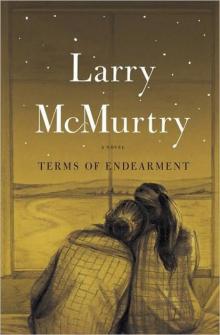 Terms of Endearment
Terms of Endearment Some Can Whistle
Some Can Whistle All My Friends Are Going to Be Strangers
All My Friends Are Going to Be Strangers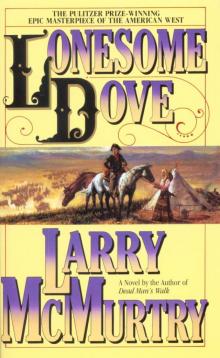 Lonesome Dove
Lonesome Dove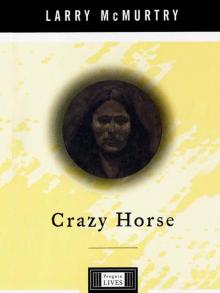 Crazy Horse: A Life
Crazy Horse: A Life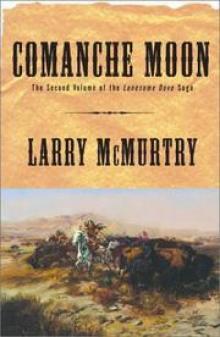 Comanche Moon
Comanche Moon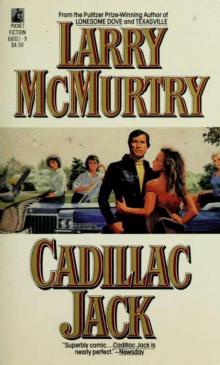 Cadillac Jack
Cadillac Jack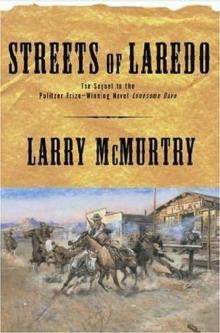 Streets of Laredo
Streets of Laredo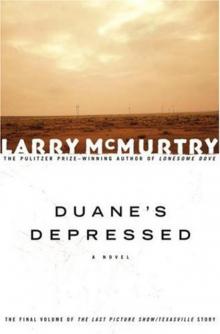 Duane's Depressed
Duane's Depressed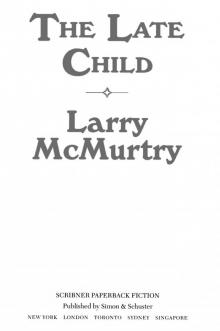 The Late Child
The Late Child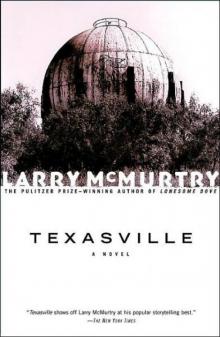 Texasville
Texasville Rhino Ranch
Rhino Ranch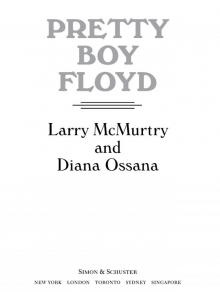 Pretty Boy Floyd
Pretty Boy Floyd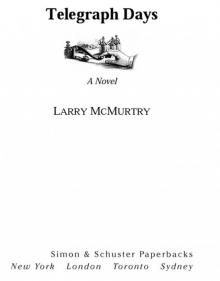 Telegraph Days
Telegraph Days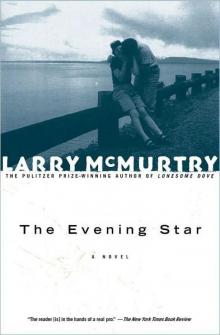 The Evening Star
The Evening Star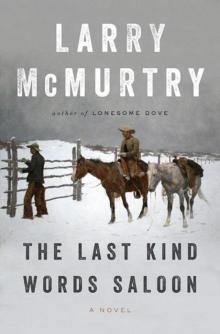 The Last Kind Words Saloon
The Last Kind Words Saloon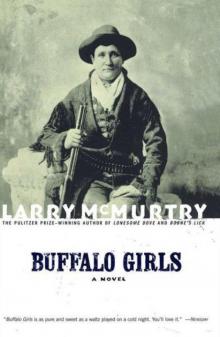 Buffalo Girls
Buffalo Girls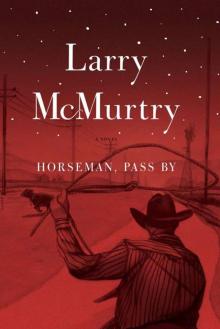 Horseman, Pass By
Horseman, Pass By Boone's Lick
Boone's Lick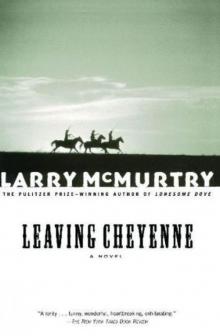 Leaving Cheyenne
Leaving Cheyenne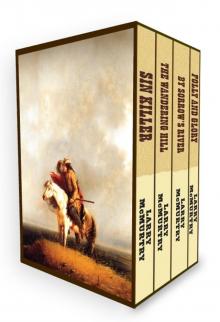 Sin Killer
Sin Killer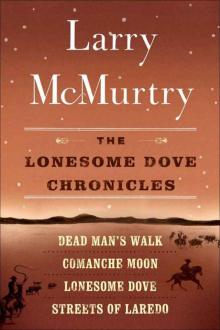 The Lonesome Dove Chronicles (1-4)
The Lonesome Dove Chronicles (1-4)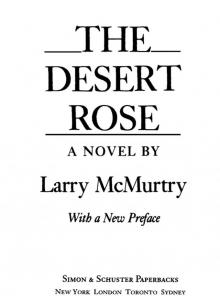 The Desert Rose
The Desert Rose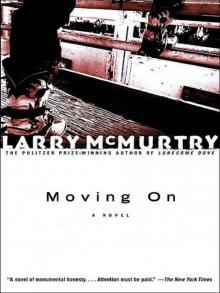 Moving On
Moving On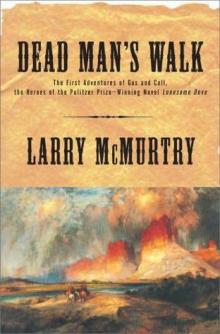 Dead Man's Walk
Dead Man's Walk The Last Picture Show
The Last Picture Show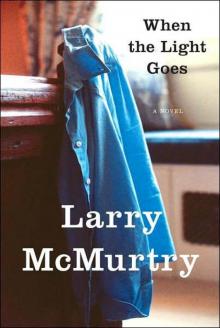 When the Light Goes
When the Light Goes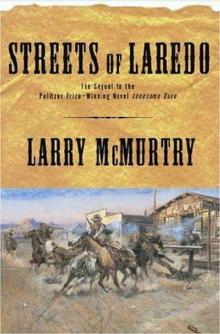 Streets Of Laredo ld-2
Streets Of Laredo ld-2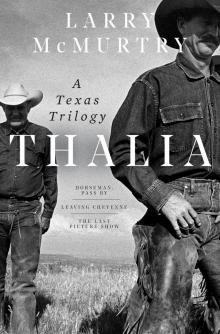 Thalia
Thalia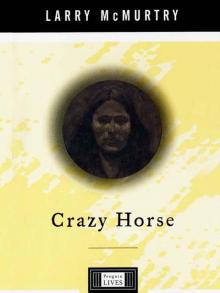 Crazy Horse
Crazy Horse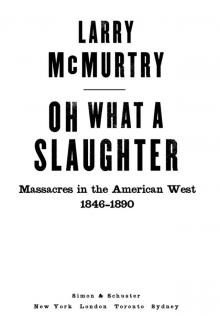 Oh What a Slaughter
Oh What a Slaughter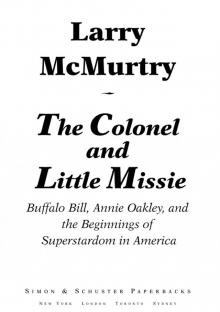 The Colonel and Little Missie
The Colonel and Little Missie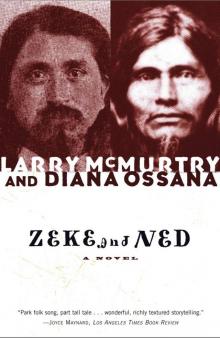 Zeke and Ned
Zeke and Ned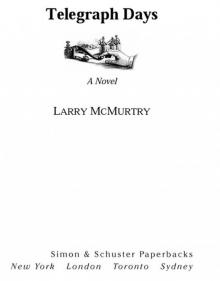 Telegraph Days: A Novel
Telegraph Days: A Novel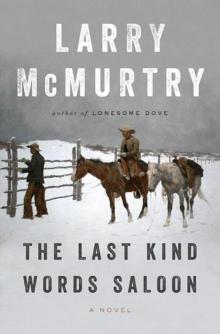 The Last Kind Words Saloon: A Novel
The Last Kind Words Saloon: A Novel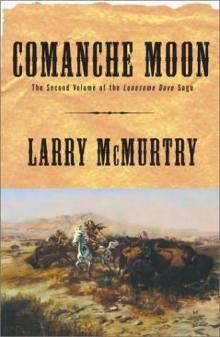 Comanche Moon ld-4
Comanche Moon ld-4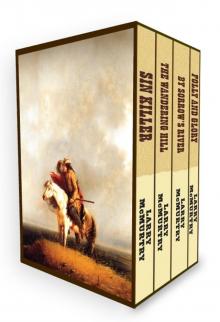 The Berrybender Narratives
The Berrybender Narratives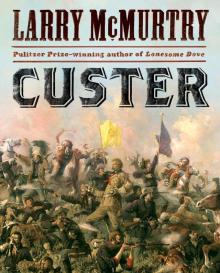 Custer
Custer